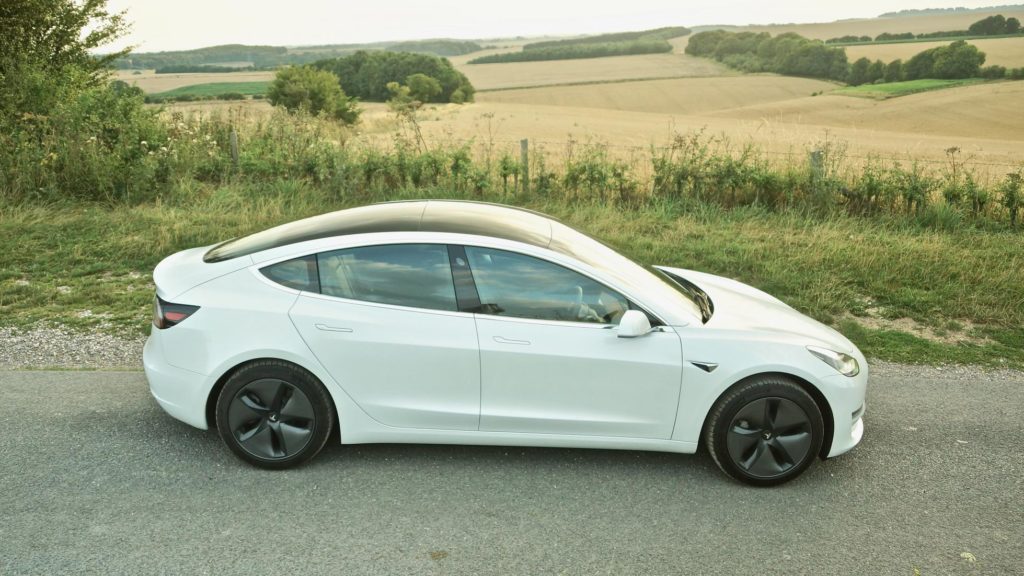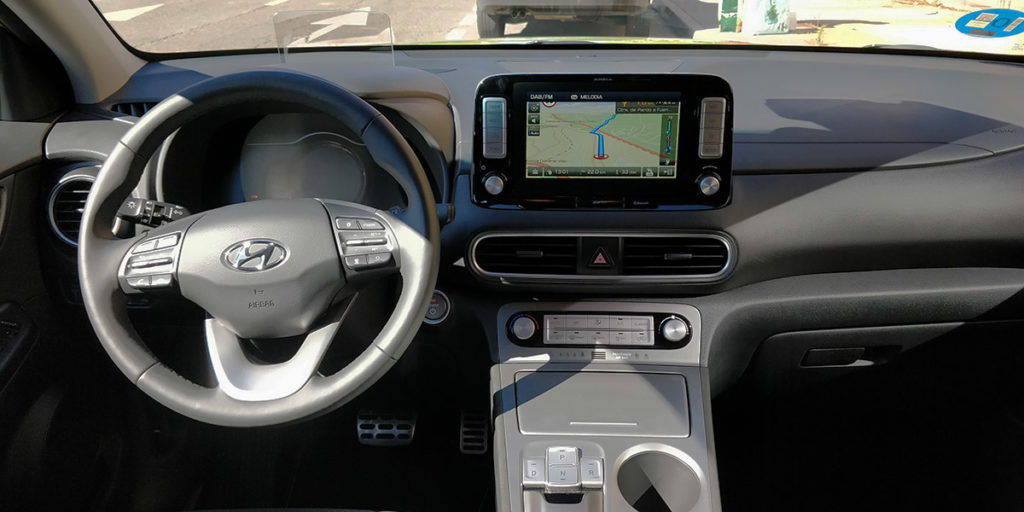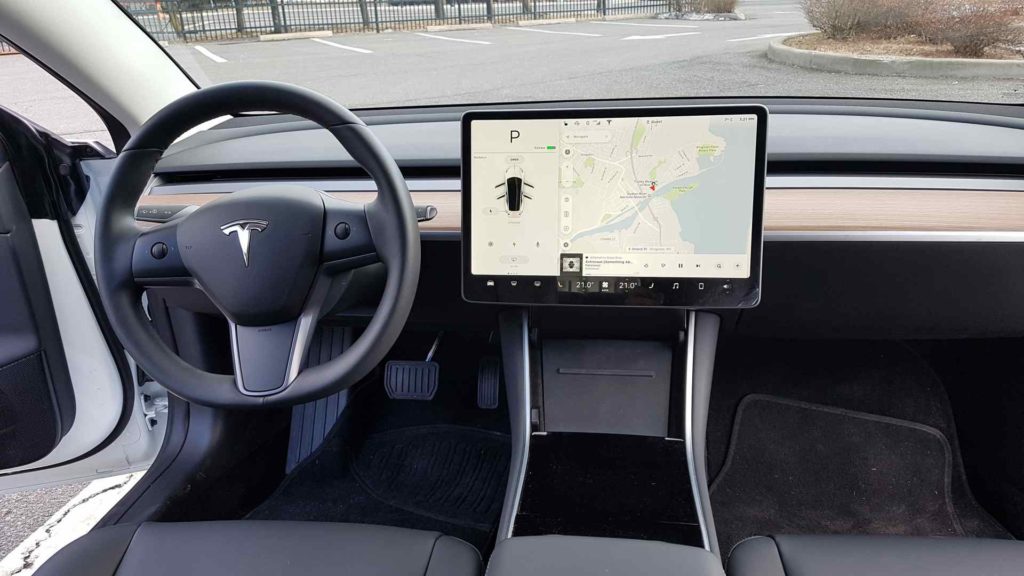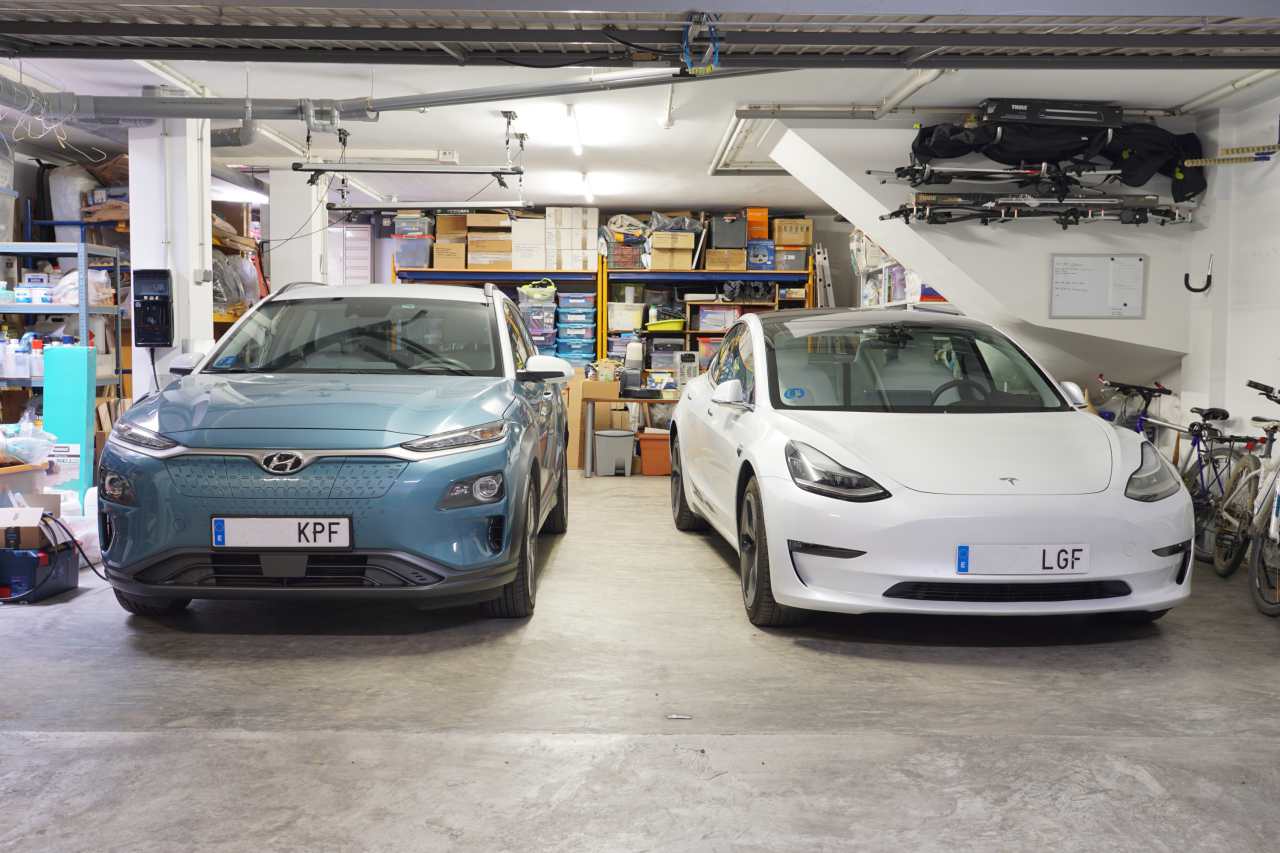For a long time, many have started to compare the Tesla Model 3 with the electric Hyundai Kona. Two of the most competitive electric cars on the market that unite and separate many factors. But no one better to describe their similarities and differences than an owner who has spent a few months with both cars in his garage to graphically represent the strongest points of each model so that those who are evaluating their purchase are clear about many of the details that they are often overlooked in technical comparisons.
There are articles comparing the electric Hyundai Kona and the Tesla Model 3. They all suffer from the same problem:
- They are comparisons made in a short period.
- They focus on the mechanical aspect.
- They lack the depth that is only achieved after a use time.
Given that at home our two vehicles are the Kona Style 64 kWh (2018 version) and the Tesla Model 3 LR Dual Motor (2020 release) with which I have traveled 24,544 and 2,609 miles respectively, and here we bring some advantages and disadvantages of each model, based on the opinion of an owner of both cars. Here it is the opinion of Antoni Nogués, who wrote an article about this theme.

Acoustic isolation
As far as sound insulation is concerned, although I am sorry, I must confess that my previous BMW X3 2.0i petrol (2016 model) was more as, or more, quiet than the Kona and the Tesla.
Consumption
Regarding consumption, I have not managed to do more than 250 miles with the Kona or more than 280 with Tesla (I have never let the battery drop below 15%), but the difference in consumption between them is not significant. It should be noted that the Kona, having the lower capacity battery (64 kWh Kona vs. 75 kWh Tesla Model 3) allows about 30 miles less before recharging, in two models that are the most efficient on the market and that share consumption average of about 10 real kWh in normal driving.

Kona has some virtues that the Tesla Model 3 does not:
- I love the Kona’s regenerative brakes, using paddles, I use them more than the brake pedal. Tesla does not have brake paddles.
- In the Hyundai, you can choose between three driving (sport, standard, and eco), in Tesla only two.
- In eco mode driving, Kona indicates the km recovered by regeneration in Tesla in no case.
- Kona indicates immediate consumption; Tesla only average consumption.
- The Korean has front seats with hot/cold air conditioning. Tesla only hot
- The Hyundai has a blind spot detection system (BCW) located in rearview mirrors + speaker + hub. Warns if a vehicle is driving in the blind spot. Tesla doesn’t have it.
- Tinted windows on the Style version of the Kona. Model 3 does not offer this possibility.
- The Kona has a braking mode called “auto,” which, even without intelligent cruise control activated, will brake (and regenerate) if you get too close to another car. Tesla does not have this system.
- Hyundai’s Lane Following Assist (LFA). Driving on the motorway, if you change lanes, when the car perceives that it has already entered the new road, it reactivates itself without press any lever. With the basic autopilot in my Tesla, to keep you in the lane again, you have to give the lever in each change, a continuous hassle.
- The Kona’s headlights self-regulate when loaded. Tesla does not offer such a feature.
- Switching from high to low and low to high is so much more accurate on the Kona, a disgrace for Tesla.
- Indication of maximum speed on the road: in the Kona, it is visual: it reads the signal through the camera, the evidence on the screen always matches the real one. In Tesla M3, the speed limit is set by the GPS position by consulting its database. Unfortunately, Tesla’s maximum road speed often does not match the actual rate – too bad for Tesla!
- Kona activates the turn signals at night when turning the steering wheel (LBA-S system) Tesla does not have this feature.
- In Kona Style, you can program the temperature, so that when you get to the car, at present, you find it at the desired temperature. In Tesla, you can remotely activate the air conditioning, but it cannot be programmed. It is worth mentioning that through third-party apps, I recommend the Stats app – if you can do the programming on the Model 3.
- I love Kona’s head-up display that Tesla doesn’t have. Without losing sight of the road, I can observe the most relevant driving parameters.
- In summer, when driving and with the air conditioning on, the objects deposited in the trunk of the Tesla 3 get very hot (and a lot) in the Kona very little. This is an aspect that I do not understand like anyone in any publication that I have read is it mentioned.
- The Kona’s rear traffic approach audible alert (RCCW) has warned me in compromising situations, especially when leaving a parking lot. Tesla does not have this security measure; only the visual information provided by the side and rear cameras.
- Entering or leaving a parking lot with a steep ramp, in the Tesla M3 I have scratched on several occasions, in Kona it does not happen, it is higher and has a shorter wheelbase.
- In Kona, if you go beyond the maximum of 30 seconds of autonomous driving (without holding the steering wheel with your hand), it deactivates. Still, you can activate it again if you stop the vehicle, pressing the button again. Once deactivated, in the Tesla, to reconnect it, you have to stop the car (put it in “p” mode) and start driving again. Impractical.
- Kona rearview mirror offers a broader field of view than Model 3
- Kona allows Android Auto and Car Play connections, in Tesla, neither of them.

But Tesla Model 3 also has features that Kona doesn’t match:
- The Tesla Supercharger network is phenomenal, the peace of mind of knowing that you are not going to be thrown away relaxes enormously. I do not explain what happened to me with the Kona in the chargers and, upon arrival: they do not work; there is a parked vehicle that does not load; they are all busy chargers; You have to register through an app that doesn’t work as you expect or… Always uncertain.
- Tesla’s charging speed is impressive; it is not the same to charge 155 miles having to wait almost an hour, then charging 186 miles in just twenty minutes.
- The rear trunk door on the Kona only has a handle on the inside right; it has two left + right on Tesla.
- The rear trunk of the Tesla much larger than the Kona, 425 liters in front of the Kona’s 361. The positive part of the Kona is its better gate access.
- In the Kona, the usual thing is to store the charging cables in the lower trunk. If the trunk is loaded, it’s a bummer to remove them. At Tesla, you store them spaciously in the front trunk, which is very easy to access.
- The Kona’s sound system is good, the Model 3’s impressive.
- The Model 3 sunroof (which passes light but not heat) spectacular, gives a great feeling of spaciousness, especially to the rear passengers.
- The Tesla Autopilot (the term is confusing; it is not autonomous driving) all and needs many improvements. It is much more accurate than the Kona Lane Following Assist (LFA). Quite a few times, driving on the highway, the Kona if on an exit, the stripes are not perfectly painted, choose the door instead of continuing straight, in the Tesla, it has never happened to me.
- Tesla Autopilot allows driving on roads with a single lane in each direction, in Kona only highway and highway, among other reasons because the turning radius offered by the Korean steering wheel is small.
- Continuous video recording in the Tesla, very efficient, Kona does not have.
- The acceleration of the Kona is excellent (0 to 100 km / h in 7 seconds). In Model 3, the acceleration (0 to 100 km / h in 4.4 seconds) is comparable to that offered by some attractions in Port Aventura!
- Thanks to its acceleration, with Model 3, you overtake whenever you want, and if they exceed you, it is because “you let yourself be overtaken.”
- Amplitude. Logically much more space in Tesla than in Kona. The Kona (4.16m long) can’t have the breadth that Tesla has with its 4.69 meters, both the front and rear seats. In this regard, a notable high for Tesla and a thumbs up for the Kona.
- Tesla lets you set up a tow ball; the Kona doesn’t.
- Searching the internet, you find many accessories for Tesla (interior and exterior customization) Kona loses by a landslide.
- Information, forums, and specific apps, the Model 3 wins again, and by a lot.
- Tesla adapts the speed according to the road’s maximum speed; in the Kona, it only informs the speed; it does not adjust to the marked.
- In Tesla, air conditioning is dual-zone + rear air conditioning, in Kona only front and without being dual zone.
- In Tesla, in parking maneuvers, it automatically activates the front collision indicator compared to another car. Until you engage the reverse gear in the Kona, the forward warning does not enable, too bad for the Kona.
- In Model 3, while you maneuver in the hoarding, the collision indicator shows the distance in cm, like a laser meter; in Kona, it is traffic light type, less precise.
- Tesla indicates various average consumption and has more resettable odometers than the Hyundai
- Tesla allows you to display a graph showing the use in each part of the journey; Kona does not.
- Starting from a standstill, in the Kona, you have to have learned the touch of the gas pedal, to which you step on more than necessary the tires skid, producing an ostentatious noise, in Tesla, or being on unstable terrain (such as gravel ) it is challenging for the tires to skid.
- At Tesla, only one voluntary service every two years, to change or check the brake fluid. You change the pollen filter. On the Tesla website, through a video tutorial, it is indicated how to proceed.
- The design and modern feel of the Tesla are unmatched. After driving a Model 3, the other cars look old (although I understand that this is a subjective argument).
- As much quality as dimension and configuration, the Tesla screen is much better than that of the Kona.
That said, if the tour is urban or peri-urban, I use the Kona. If the four of us who live at home go out, or I have to travel more than 125 miles, I choose the Tesla, for the simple fact that it is not the same to park a 4.16m vehicle than one of 4.69m in length.
Finally, I do not want to leave without commenting that I have omitted some advantages related to the Tesla app from where to control multiple car elements, from the air conditioning, to opening the windows to ventilate, turning on or off the Sentinel mode … etc. Being 2018, our Kona does not have an app, but those of 2020 do incorporate it. But since I don’t know its characteristics, I can’t compare them.
Also, comment that we are two high school teachers, and both cars’ purchase has resulted from savings and environmental awareness.

